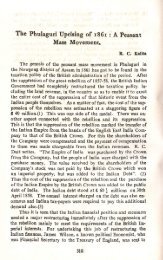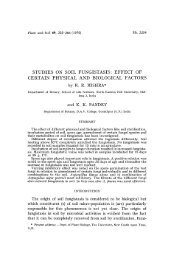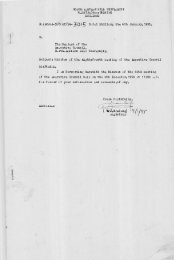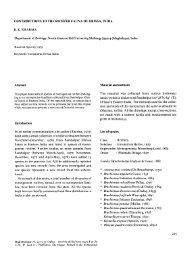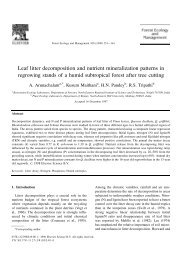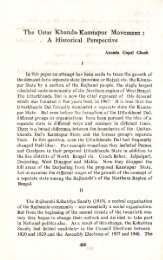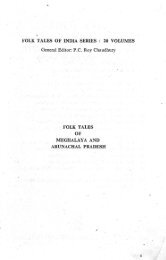Reorganisation of NE India Since 1947.pdf - DSpace@NEHU ...
Reorganisation of NE India Since 1947.pdf - DSpace@NEHU ...
Reorganisation of NE India Since 1947.pdf - DSpace@NEHU ...
Create successful ePaper yourself
Turn your PDF publications into a flip-book with our unique Google optimized e-Paper software.
INTRODUCTION<br />
The British took over Assam in 1826 to make the eastern frontier<br />
<strong>of</strong> the British possessions secure, although the architect <strong>of</strong> the<br />
British possession <strong>of</strong> the extended north-east frontier, David<br />
Scott, initially was against the permanent occupation <strong>of</strong> Assam.<br />
But the scene completely changed with the discovery that the<br />
tea plant was a native <strong>of</strong> Assam. The realisation that the plant<br />
was genuine tea and capable <strong>of</strong> manufacture into a marketable<br />
item and later discovery <strong>of</strong> open seams <strong>of</strong> coal and presence <strong>of</strong><br />
petroleum and other minerals made Assam attractive to British<br />
capital investment in progressive measure. The initial hesitancy .<br />
vanished and Assam was finally annexed in 1838. Assam<br />
underwent rapid transformation after this and British investment<br />
increased. With the final annexation <strong>of</strong> Assam, the Government<br />
<strong>of</strong> <strong>India</strong> assumed as successor government, the paramountcy<br />
over the north-east Hills. Like the Ahoms, the Supreme<br />
Government pursued a policy <strong>of</strong> non-interference tempered by<br />
conciliation and display <strong>of</strong> force. During the period <strong>of</strong> 1826 and<br />
1874, the British authority extended over the hills bordering<br />
Assam and Barak valley.<br />
During this period, relations with the hills had been handled<br />
on an adhoc basis by the <strong>of</strong>ficials in the neighbouring areas. The<br />
degree <strong>of</strong> authority exercised by the British on becoming the<br />
paramount power had varied in different areas and in reference<br />
to different races <strong>of</strong> hillmen. The object <strong>of</strong> British policy towards<br />
the hills had been conciliation and penetration giving the northeast<br />
<strong>India</strong> a new territorial and administrative unity.<br />
The British inherited and continued the Inne Line policy from<br />
the Ahoms. This was assimilated and brought into line with their<br />
own political philosopy <strong>of</strong> broad non-intervention pursued<br />
elsewhere in <strong>India</strong> at that time. The Inner Line Regulation <strong>of</strong><br />
1873, the Scheduled Districts Act, 1874, the Government <strong>of</strong> <strong>India</strong><br />
Act, 1919, the Government <strong>of</strong> <strong>India</strong> Act, 1935 broadly unfold the<br />
British tribal policy, and administration <strong>of</strong> north-east <strong>India</strong>.<br />
""






